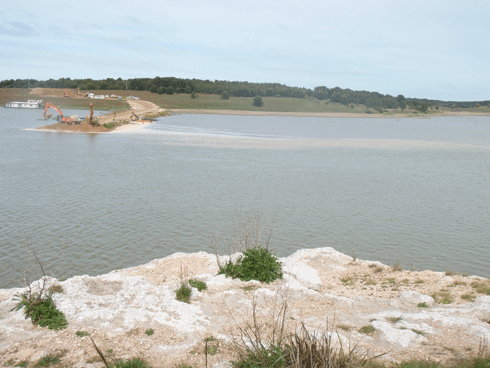
|
Published: 20 December 2010
Lower lakes finally reconnected
The recent partial removal of the Narrung Bund, built in early 2008 to prevent acidification in Lake Albert, has been partially removed. This means water is flowing naturally from South Australia’s Lake Alexandrina into Lake Albert for the first time since 2008. A second partial removal of the Clayton Bay regulator is allowing fresh water to flow from the Finniss River and Currency Creek into Lake Alexandrina, and flood waters from the River Murray to reach the Murray Mouth via the Goolwa channel and barrage.

|
|
The plume of silt caused by the removal of the Clayton Bay Regulator is now extending into the Goolwa Channel. Credit: Diane Bell
|
The move was prompted by increased flows into the River Murray system from widespread rain, which caused water levels in Lake Alexandrina to return to its operating level of 75 centimetres above sea level.
Reconnecting the lakes will have considerable benefits for Lake Albert, including the management of exposed foreshores, a reduction in salinity levels and the re-establishment of fish passage between the lakes.
Although Professor Diane Bell, Chair, River, Lakes and Coorong Action Group Inc, still has concerns about the effect of plumes of silt caused by the Bund’s removal on water quality, she welcomes the move, saying that improved water flows and a reduction in salinity have already resulted in increased birdlife and huge numbers of frogs breeding.
‘Life is slowly coming back,’ she says. ‘It’s not yet at the richness or density that it should be, but it’s getting there. Although we haven’t seen it yet, the removal of the barrage means that congoli fish (Pseudaphritis urvilli) will once again be able migrate to the estuary to breed, while tubeworm encrustations on tortoises will also start to disappear as salinity levels drop.’



